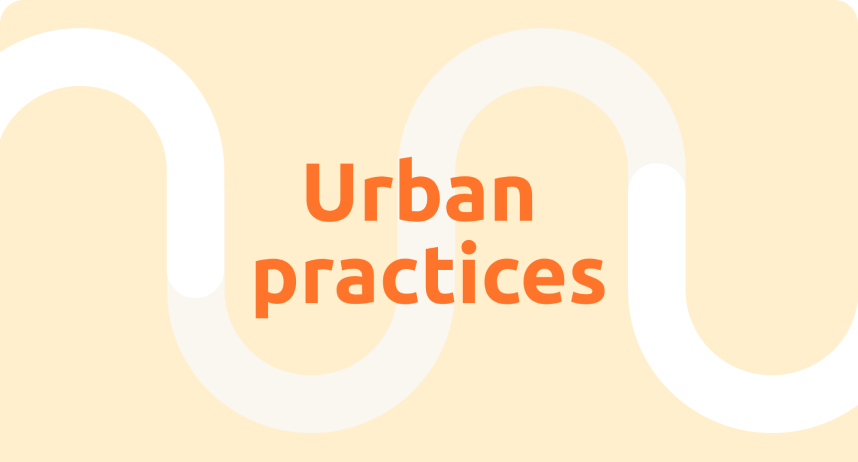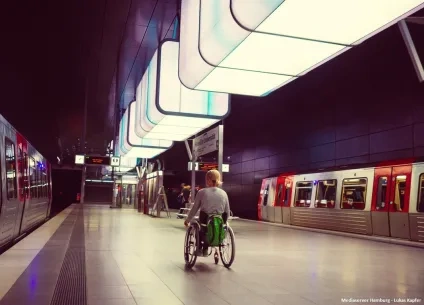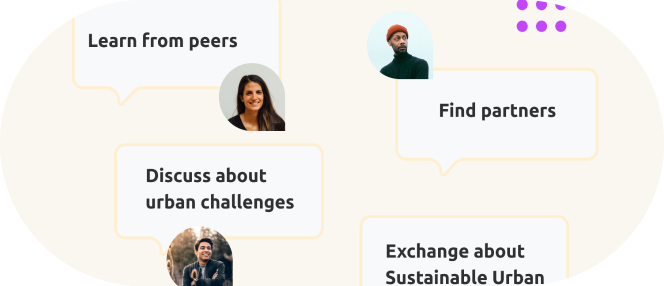Transfer the transformation: the S4T model for promoting innovation, New European Bauhaus and sustainability in transfer cities
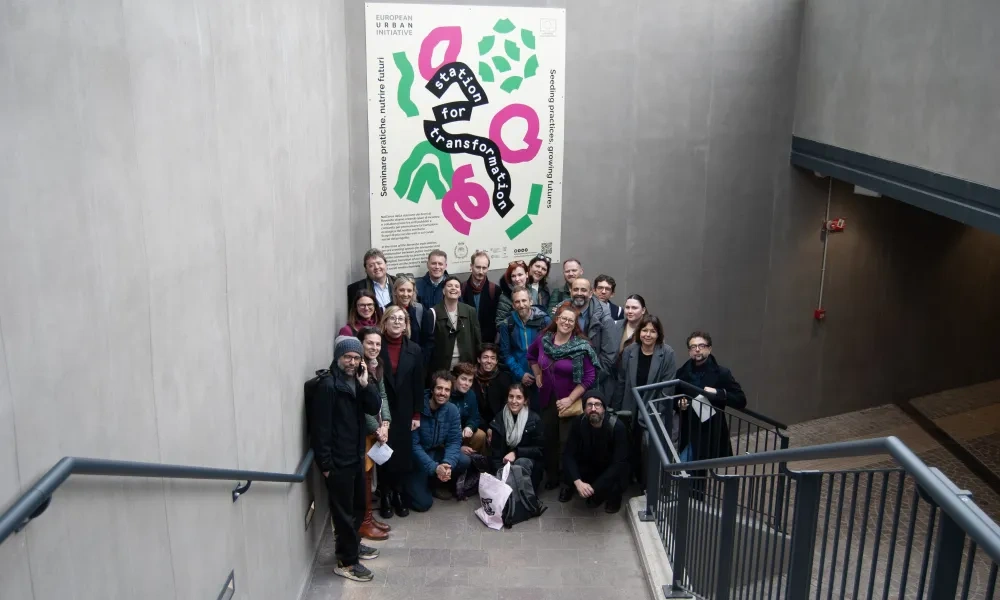
The transfer of the innovative solutions developed by Station for Transformation is an engaging process that is not only having an impact on the Transfer Cities, but also on Rovereto that is promoting its forward-looking approach on the New European Bauhaus creating a wide network of connections at European scale.
During a site visit, sharing a snack is often seen just as a simple, convivial break. But sometimes these moments carry deeper meaning. Enjoying an infusion of local herbs or tasting breadsticks made with ancient grains or buckwheat crepes prepared by one of the agri-food innovators hosted by the temporary residency programme of S4T-Station for Transformation offered the representatives of the Transfer Cities that attended the site visit (Granada, Nova Gorica and Sibiu) a tangible sense of how Rovereto’s Innovative Action project is focusing on sharing food as a powerful tool to deliver innovative and engaging forms of education to sustainability.
Experiencing first-hand the added value of initiatives that are reshaping the conversation about design and sustainability in Rovereto and the Vallagarina valley was part of the opening site visit to Rovereto held from 11 to 13 March 2025. The visit was designed for being an immersive experience into the different locations targeted by the project and, more in general, into that collaborative ecosystem between local authority and civil society which characterize the Rovereto’s approach.
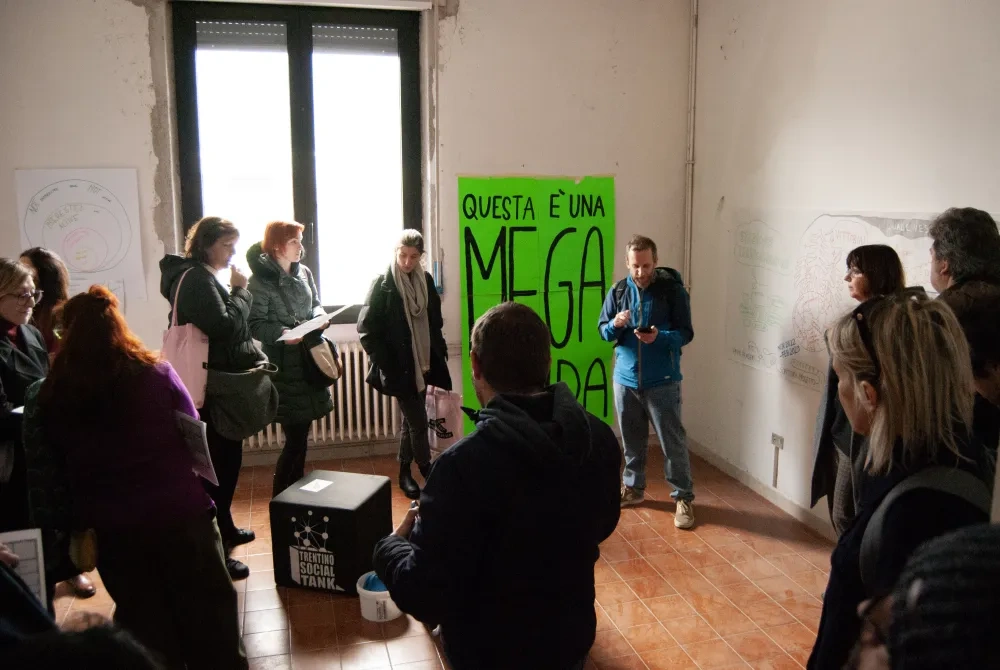
The presentation of the different components of the project was made with a combination between plenary sessions and dynamic visits to the spaces of the railway station that are currently being regenerated in order to be transformed into a green innovation hub. These spaces include the abandoned newsstand transformed into a Biodiversity Kiosk, an information point on sustainable practices, a former cafeteria converted into a Climate Canteen which will host hands-on activities like cooking classes or workshops, and the upper floor of the station turned into a co-creation space for students and local innovators exploring different dimensions of sustainability.
Exploring spaces, like those hosting La Foresta which began the regeneration of underused areas of the station, was an opportunity for the Transfer Partners to understand the physical and conceptual foundation of Station for Transformation, that aims at improving access to knowledge on sustainability for different segments of the local population.
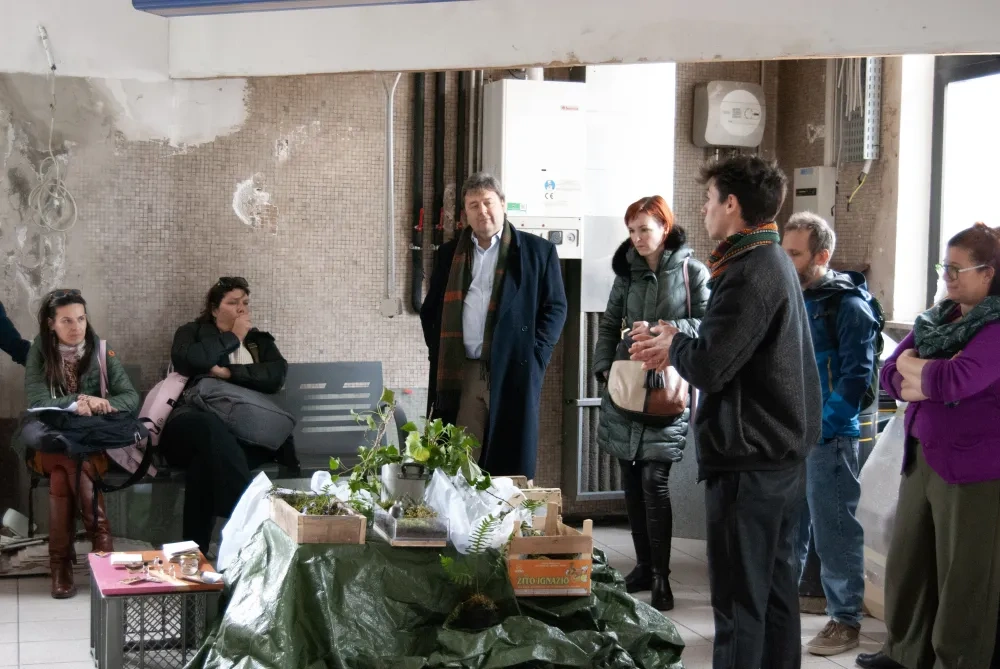
The conversations with agri-food innovators who are testing innovative uses of local crops or the visit to the Forno Vagabondo, a social oven transported by a cargo-bike that inspired the activities of active engagement on sustainability carried out by Station for Transformation in Vallagarina valley, were useful opportunities for understanding the impact that the project can have on different targets, and for highlighting possible elements that may be adapted and replicated by the transfer cities.
The transfer paradigm and its impact on the transfer cities
As a brand-new component introduced by the Innovative Action projects since its first call on New European Bauhaus, the transfer part is presenting interesting challenges both to the main urban authority, which is coordinating the transfer while the innovation is still evolving, and to the transfer partners who are invited to apply knowledge as it is being created.
The opening site visit marked the end of the first stage of the transfer process, a three-month stage focused on making sense of the concept and understanding the project and its innovation blocks. This phase leads into the local lift-off stage, where transfer partners evaluate their capacity to transfer the different blocks of the innovative model into their local contexts, through the use of a variety of tools such as the Entry Capacity Survey and the SWOT Analysis.
The development of the Transfer Roadmap, conceived as a living document that evolve through the process, paves the ground for the third stage focused on feasibility testing. Over the following 18 months, cities will implement pilot actions to test the transferability of specific elements of the Innovative Action project. The final stage is focused on preparing for transfer the innovative solutions learnt during the transfer process, with each partner producing a Transfer Study and the main urban authority drafting an Innovation Solution Model, which includes a reference to financial resources needed for implementation.
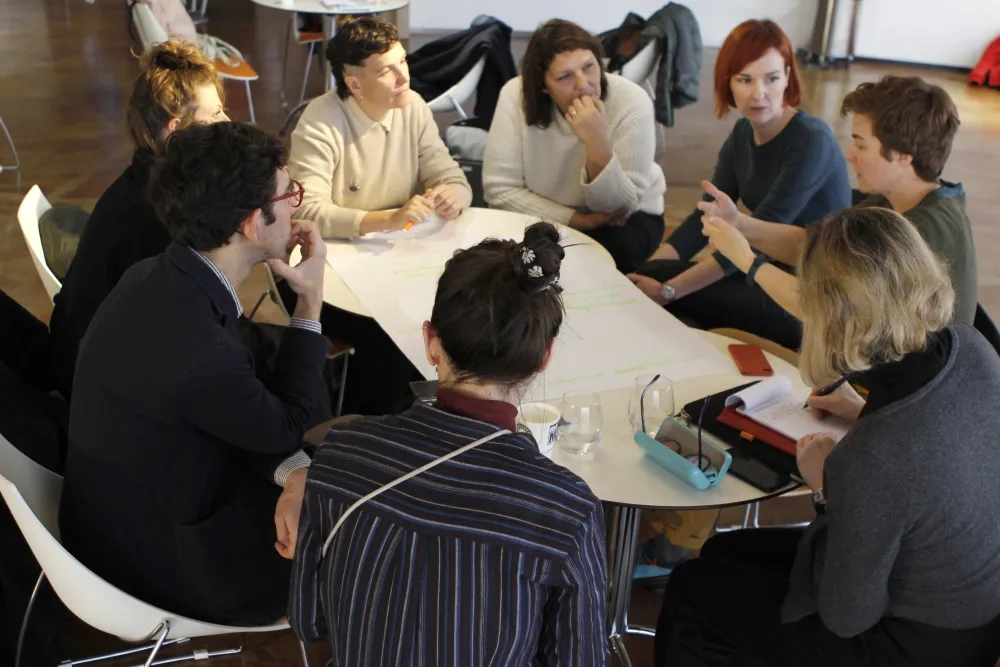
The interactive sessions among the partners organized during the opening site visit helped to highlight the elements that the transfer partners consider more promising for medium and long-term transfer.
Elements like the narrative shift on sustainability which is at the core of the curatorial concept of Station for Transformation and the collaborative governance model developed through the partnership between the urban authority and the project partners for delivering activities which have an impact on the urban and peri-urban level are some of the first elements that sparked the attention of the transfer partners, which are focusing on where and how to test the transfer of the Rovereto’s model in their local contexts.
Some interesting options are already emerging from the dialogue with the transfer cities that are finalizing their transfer roadmaps with the support of the Transfer Expert and the coordination by Centro per la Cooperazione Internazionale, the partner of S4T which is in charge of the transfer work package.
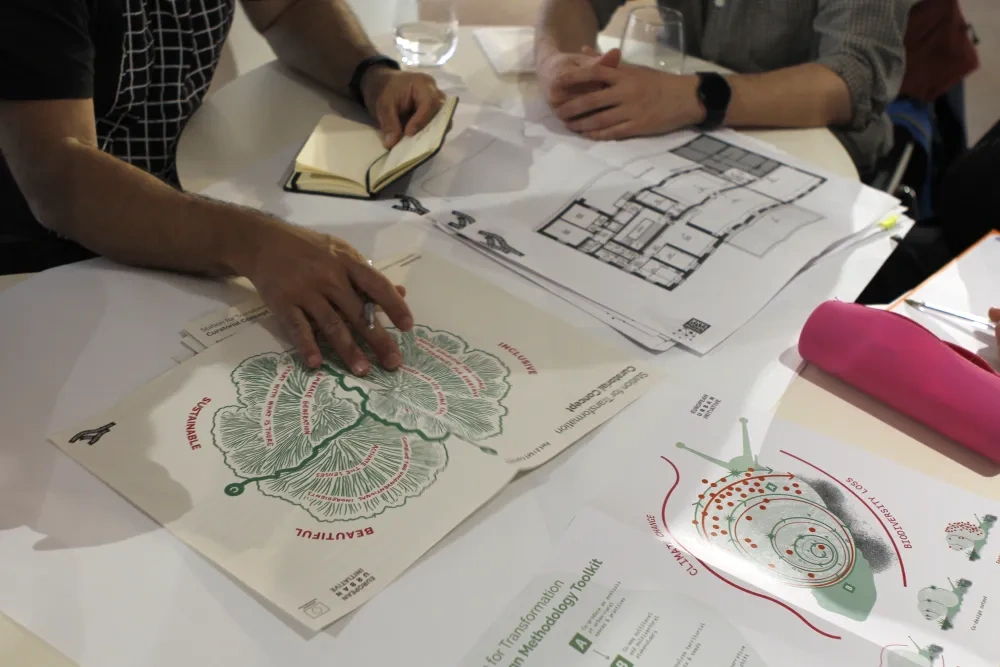
In Granada the focus will be on developing an innovative public programme of workshops and training on sustainability for different segments of population. These activities will be carried out in Plaza de la Caleta, a public space recently regenerated with furniture providing shelter from summer heat. Discussing about climate and biodiversity in a place that is a symbol of the action of the city on sustainability will be crucial for raising awareness among the residents in a space serving functions similar to the ones planned by the Biodiversity Kiosk of Rovereto. The covering roof acting as shading and cooling infrastructure will be doubled for being widely available as climate shelter but also as point of reference on sustainability education.
Focusing on the iconic railway station area that straddles the border with Italy, Nova Gorica seeks to replicate the concept of Rovereto’s Climate Canteen through the regeneration of Super 8, a previously abandoned building that is hosting activities during the European Capital of Culture in 2025. Following its temporary cultural role, Super 8 will be transformed into a restaurant inspired by the local tradition of the osmiza, traditional taverns where farmers opened their doors to visitors. While both cities plan to emphasize the participatory dimension by involving local stakeholders in the process, this aspect will be particularly relevant for Nova Gorica, which is placing strong focus on food as a tool for civic engagement and active inclusion of underprivileged communities.
Piraeus is focusing its efforts on the port area, where multimodal transport systems converge and key environmental challenges like climate resilience, biodiversity, social inclusion and over-tourism are most pressing. Within this zone, the city identified an underused seafront venue to host workshops and activities co-designed with local stakeholders, with the objective of promoting sustainability and biodiversity education in a high-traffic area frequented by both residents and tourists. The replication of the S4T model in a densely built and mobility-driven urban environment will also provide an interesting testing ground for its further application in other Mediterranean and port-based contexts.
Transferring innovation and the NEB principles: the challenges of Rovereto
On 11 and 12 November 2025 Nova Gorica will host the second transfer visit, that will be a precious chance not only for observing how the city is preparing for transferring the innovative elements of Station for Transformation, but also to strengthen strategic cooperation with Rovereto.
“It's the first time that we participate in an EU co-funded project of this scale. Beyond our historical connections with cities in Germany and Austria, we are now building relationships with very different cities also in countries like Spain, as in the case of Granada, with whom we had no previous ties. Our ambition is that Station for Transformation will lay the ground for longer-term partnerships that extend beyond the topics of the project. That is a key priority for Rovereto, and that is why our Mayor will also join the visit to Nova Gorica, which is a key step in the transfer process of S4T” says Arianna Miorandi, Deputy Mayor of Rovereto in charge of welfare policies.
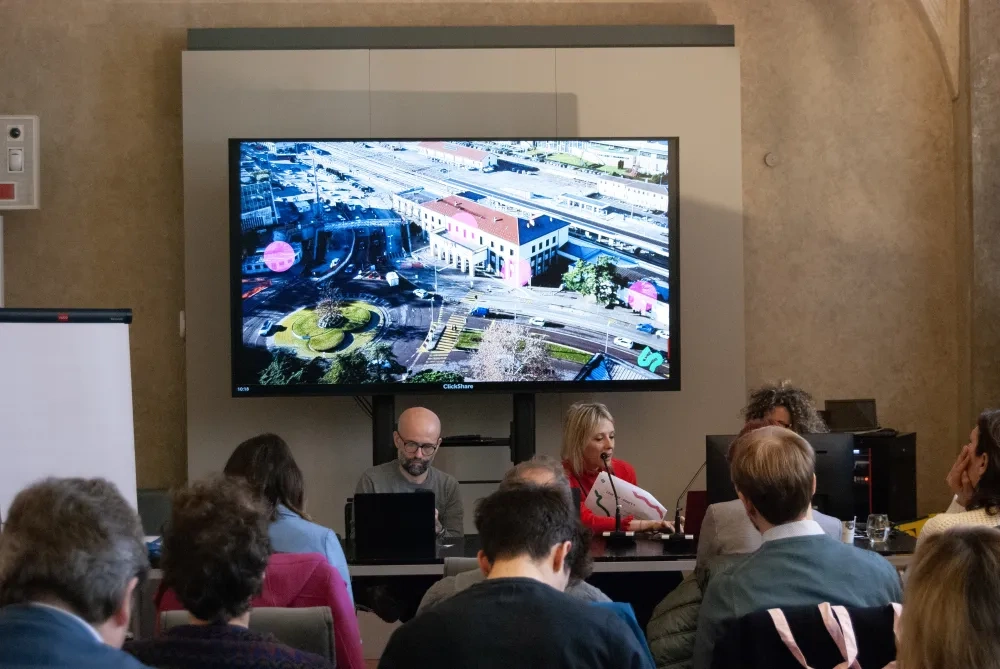
The transfer component of Station for Transformation also represents an important opportunity to showcase local projects and initiatives aligned with the topics of sustainability and active inclusion which are targeted by Rovereto and by some of its project partners. The strong interested shown in the opening site visit for the local initiatives carried out by La Foresta, which engages different targets of population on sustainability through accessible and creative activities, is one of the elements on which future partnerships can be built, also to foster the adaptation and replicability of these models in other cities and networks across Europe.
Meanwhile, the transfer process is also fostering the exchange of knowledge on the New European Bauhaus principles, which Rovereto and the S4T partners have embedded in a series of local policies. In the framework of the S4T curatorial concept, a series of online thematic seminars has been organized to explore the intersection between New European Bauhaus, civic engagement and integrated governance.
The development of place-based strategies for the implementation of the New European Bauhaus principles will be a key outcome of the multidirectional dialogue fostered by Station for Transformation, that is not just a simple one-way transfer of innovation from Rovereto but is incorporating useful elements on the role of mobility hubs for civic engagement and the strategies for leveraging both local and European resources to support local transformation.
About this resource
The European Urban Initiative is an essential tool of the urban dimension of Cohesion Policy for the 2021-2027 programming period. The initiative established by the European Union supports cities of all sizes, to build their capacity and knowledge, to support innovation and develop transferable and scalable innovative solutions to urban challenges of EU relevance.
Similar content
